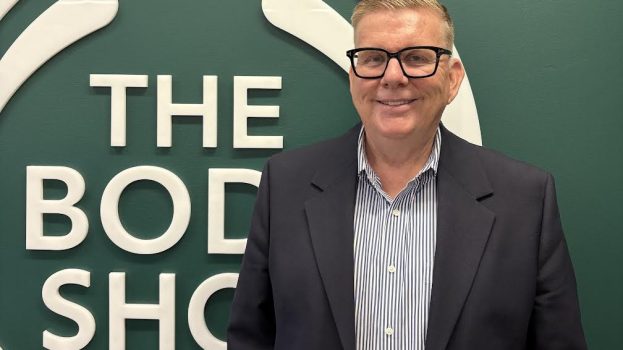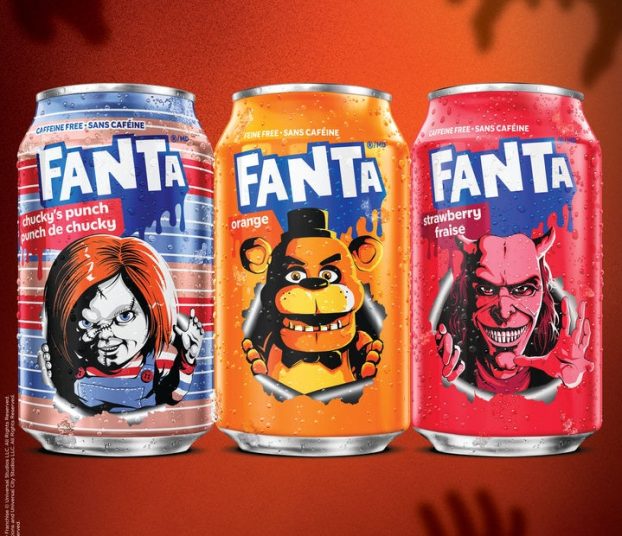So your agency lands the big one. Make that the really big one. It’s the most extensive Canadian launch ever in its category. It’s a little blue pill that’s already got the whole world buzzing because, get this, it boosts male potency. So we’re talking sex, a revolutionary drug, and limitless rock ‘n roll for your creatives.
But there’s a catch. Your boffo new account is for Viagra. That’s a pharmaceutical. This is Canada. And that means whatever campaign you come up with must abide by rules so dictatorially ditzy they could have been dreamed up by the queen in Alice in Wonderland.
To wit: If you identify your pharmaceutical product in an ad, you cannot specify its benefits. If you identify the condition or disease your product addresses, you cannot name your product.
So the question is, what could an agency possibly do from inside this virtual straitjacket?
Well, if you’re Toronto’s Taxi, you simply make like Houdini, slip out of the shackles and come up with a breakthrough campaign. And if you’re Pfizer Canada, you have the prescience and good old-fashioned guts to set aside your cautious nature and run with it.
The resulting campaign sticks to the DTC rules. But it still manages to be so innovative and effective that the buzz about Viagra on this side of the border has taken on a tenor all its own – lighthearted instead of leering, candid instead of nudge-nudge, wink-wink.
Even better, from Pfizer’s point of view, says Veronica Piacek, the company’s team leader for Viagra, ‘the number of Canadian men seeking treatment for erectile dysfunction [E.D.] is now trending upward, as is the number of doctors who are raising the subject with their patients.’
Before Viagra’s approval for use in Canada in 1999, says Piacek, one in two Canadian men over 40 were estimated to experience E.D., but only 15% of them were actually consulting their doctors about it. She declines to cite the actual increase in the number of men now asking their doctors for Viagra, much less Pfizer Canada’s profits from that increase. But she does say that the millionth Canadian prescription for the drug was written last year.
Big picture-wise, Viagra is now being prescribed for more than 16 million men in some 70 countries and Fortune magazine recently estimated that annual international sales of the drug top US$2 billion.
As for Canada, Piacek says Pfizer’s ‘goal from the start was to destigmatize E.D., to bring it out of the closet and we’re now being told by a lot of consumers and physicians that [our ad campaign] is making that happen.’
So how was this laudable feat accomplished? Basically, the Taxi team’s strategy was to break away from the initial print-only campaign and use a one-two TV punch. First up were two unbranded spots that discussed E.D. in a far more engaging manner than the usual white-coated doctor stodgily pontificating. And then came the branded spot that got people talking to the tune of millions of dollars worth of free publicity.
The first unbranded spot, a photo-essay-style gem, appeared in April 2001 and featured a man in a doctor’s office completing a physical check-up. He’s obviously dying to broach the subject of E.D., but chickens out. Consumers are then urged to level with their doctors if they suffer from E.D.
The second unbranded spot, which began airing last September, emulated – albeit in a far less macho way – Pfizer USA’s use of athletes (racecar drive Mark Martin, baseball player Rafael Palmeiro and soccer legend Pele) to tout Viagra. What Canadian consumers saw was hockey hero Guy Lafleur in a locker room encouraging men to consult their physicians about E.D.
Then came the now-famous branded spot. It hit TV screens in January and water coolers everywhere the next day. It was dubbed ‘Good Morning,’ partly because the sound track uses a bouncy 1950s song with that moniker, and partly because the affable everyguy in the commercial is obviously having a very good morning indeed.
Why? We have no clue as we see him bopping happily along on his way to work, cartwheeling, leapfrogging, slam-dunking and smiling goofily at all and sundry. And then we suddenly get it. The reason the man is so happy is because he – let’s use a mild euphemism here – ‘got lucky’ the night before. And, strictly by implication, we learn what made his happiness possible. ‘Viagra,’ says the closing super. ‘Talk to your doctor.’
The concept was as simple as it was brilliant, says, among many others, Strategy columnist and veteran ad man John Burghardt, who rated the spot ‘smart and classy’ and gave it a 10 the moment he saw it. ‘When you’ve got a product that’s unique and exciting in its own right, like Viagra, it’s best to sit back and stay out of the way,’ he says, as Taxi did in this ad.
Andy Macaulay, a partner at Toronto’s Zig agency, was equally impressed. ‘As a piece of communication, I think [the ‘Good Morning’ spot] is incredibly breakthrough, especially because they were forced to be oblique in their message.’
Ironically, says Maxine Thomas, Taxi’s strategic planner, the strict DTC regulations had their use after all.
‘Sometimes limitations actually free you up because they send you down a very narrow road and that focuses you on just the pure possibilities. We decided…we wanted to change perceptions and help people realize that [overcoming E.D.] has as much of an emotional benefit as a physical one. And that led to one of those creative leaps where we realized that an interesting way to do that would be to show someone who’s feeling much happier.’
With that concept in place, the creative team on the ‘Good Morning’ spot – art director Alan Madill and copywriter Terry Drummond – set to work on the execution. In a series of hilarious sessions in Toronto and Montreal, they auditioned dozens of actors. Then they found just the right combination of rumpled charm and, says Madill, ‘Jim Belushi-quality dancing’ from B.C. golf pro and part-time actor Andrew Winston.
Drummond says a real eureka moment occurred when an Internet song search led the team to the happy little ditty Debbie Reynolds sang in the classic musical Singin’ in the Rain.
‘We knew it would work because it has a great innocence and joy that really matched what we wanted to do visually…[which was] to stay away from anything cheesy and just present someone who was reinvigorated.’
The Taxi team subsequently produced a third unbranded spot, called ‘The Straight Goods,’ which Piacek says furthers Pfizer’s mission of expanding consumer knowledge about E.D., in that it focuses on a variety of possible physical causes for the disorder.
What’s next for the Viagra campaign? No one at Pfizer or Taxi will talk specifics because, possibly as early as next spring, their product will no longer be the only game in town. As soon as Ottawa greenlights them, wannabe products from Eli Lilly/Icos, GlaxoSmithKline/Bayer and NexMed will begin competing for market share on Viagra’s turf.
So Pfizer will need to muster up more of the daring and creativity it has demonstrated so far to produce a campaign that somehow manages to differentiate Viagra’s product benefits without mentioning its name. How will they do it? A whole bunch of us can’t wait to find out.























